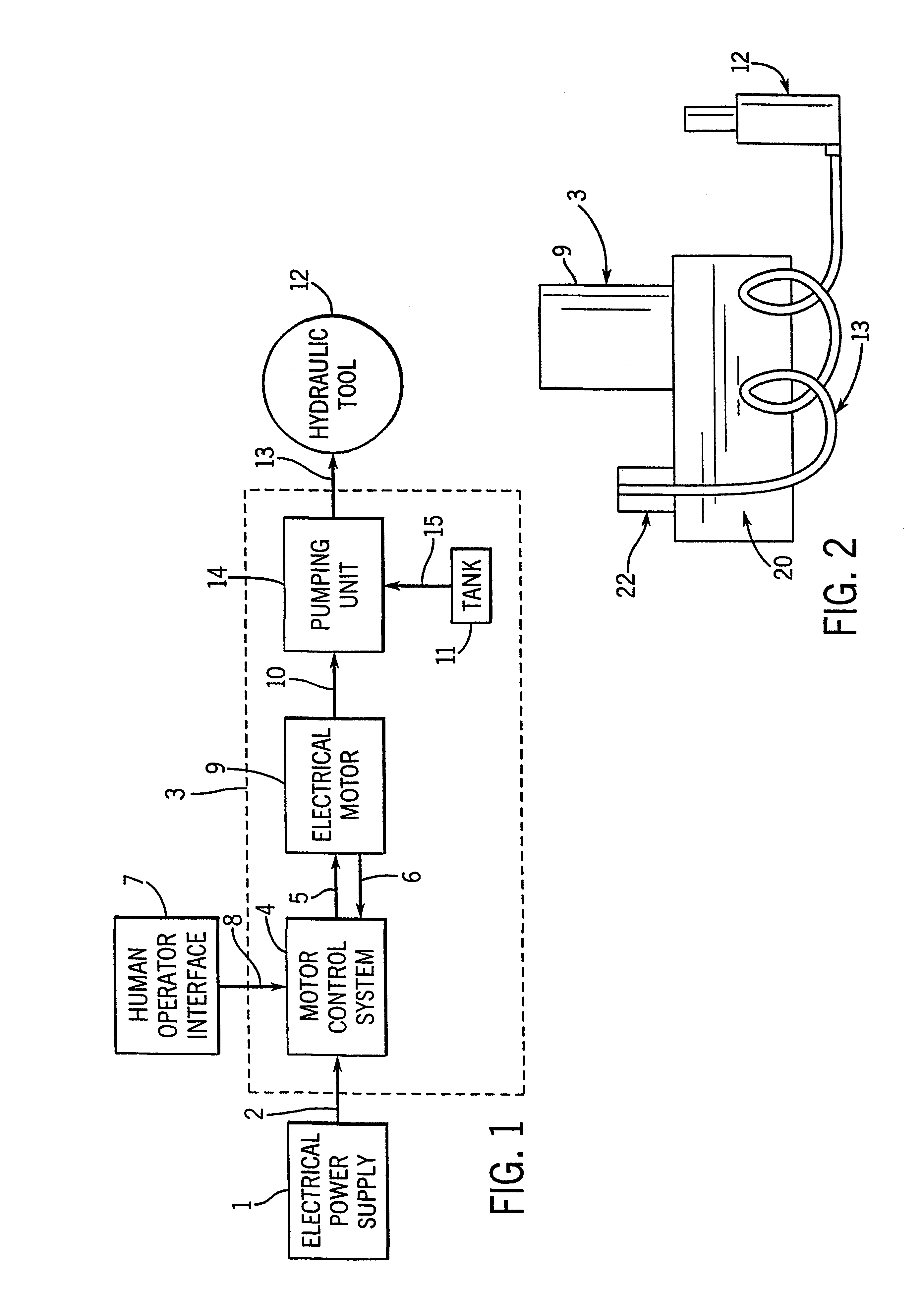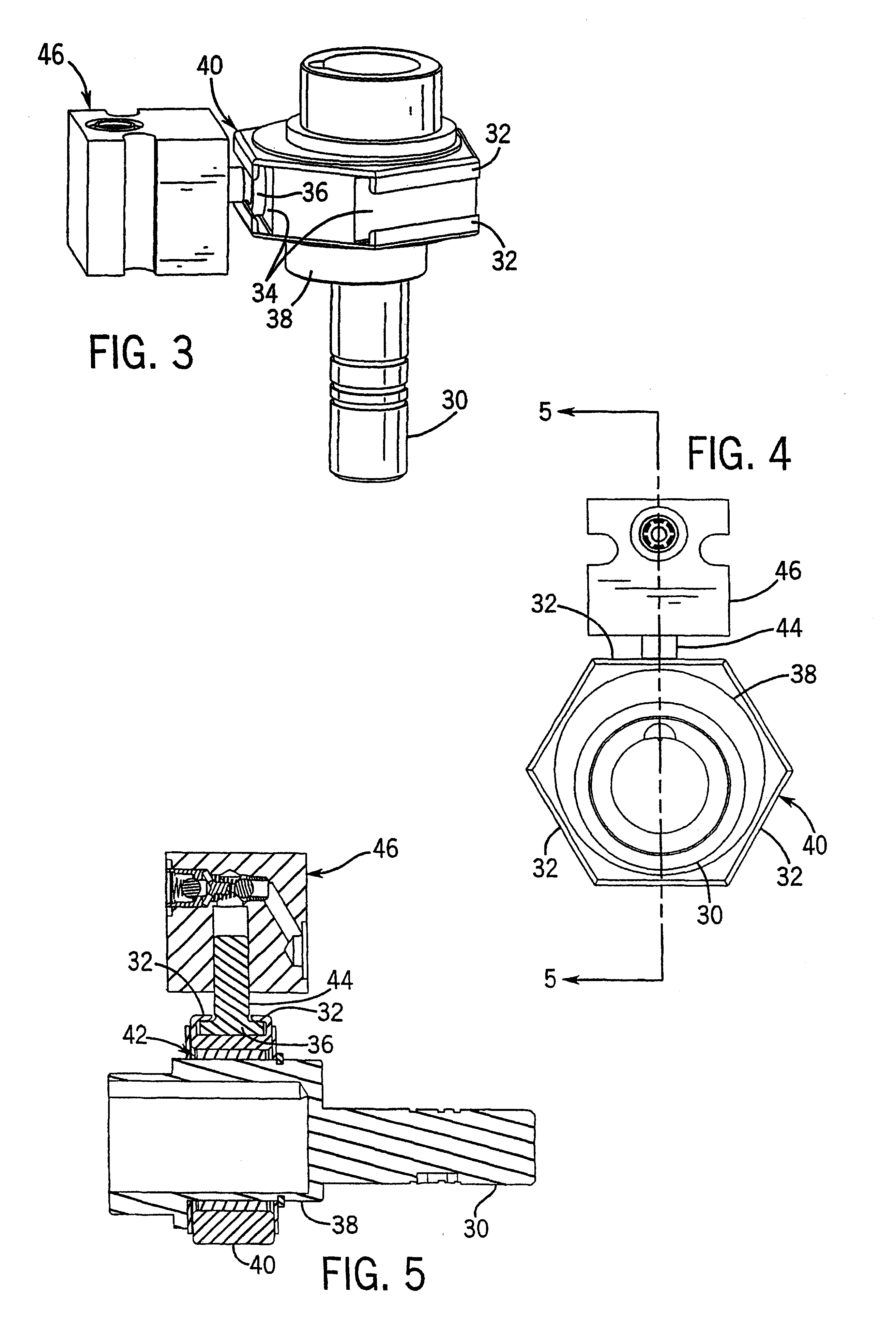Variable speed hydraulic pump
a hydraulic pump and variable speed technology, applied in the field of hydraulic pumps, can solve the problems of high heat generation, high cost of the pump, and inability to meet the needs of many applications, and achieve the effects of low presssure, high flow rate, and high flow ra
- Summary
- Abstract
- Description
- Claims
- Application Information
AI Technical Summary
Benefits of technology
Problems solved by technology
Method used
Image
Examples
Embodiment Construction
Referring to FIG. 1, there is illustrated a block diagram of the variable speed pump. The block labeled 3 corresponds to the variable speed pump invention. The electrical power supply 1 to the pump is obtained through standard electrical distribution such as 120 VAC, 240 VAC, or other voltages and may be single phase or three phase in nature. It is shown supplying the pump 3 with electrical power by means of line 2. The output of the pump is a hydraulic line 13 that feeds a hydraulic tool 12, for example. The pump also has provisions for a human operator interface, i.e., a remote control pad, as shown by block 7. Block 7 provides inputs to the pump 3 such as power on, power off, forward, reverse and so on. These functions are communicated to the pump by means of line 8.
The variable speed pump 3 has three main components indicated by the motor control system 4, the electrical motor 9 and the hydraulic pumping unit 14. The pump also has a tank 11 to supply hydraulic fluid to the pump ...
PUM
 Login to View More
Login to View More Abstract
Description
Claims
Application Information
 Login to View More
Login to View More - R&D
- Intellectual Property
- Life Sciences
- Materials
- Tech Scout
- Unparalleled Data Quality
- Higher Quality Content
- 60% Fewer Hallucinations
Browse by: Latest US Patents, China's latest patents, Technical Efficacy Thesaurus, Application Domain, Technology Topic, Popular Technical Reports.
© 2025 PatSnap. All rights reserved.Legal|Privacy policy|Modern Slavery Act Transparency Statement|Sitemap|About US| Contact US: help@patsnap.com



